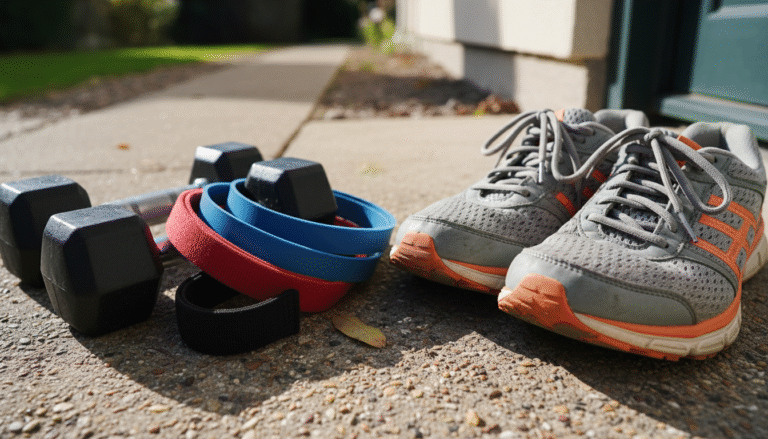Stress Relief for Couples: Practical Stress Management Strategies That Actually Work
Practical, research-backed stress relief for couples with simple rituals, scripts, and tools you can use today—warm, relatable, and proven to help.
I used to think “stress relief for couples” was for people who had dramatic, reality-TV-level arguments. Not us. We were fine. And then—like a pop quiz we didn’t study for—2020 happened. Within weeks, our 800-square-foot apartment had become a coworking space, cafeteria, therapy room, and occasional boxing ring (verbal jabs only). We ran out of new things to say and started arguing about… toilet paper orientation. You know it’s bad when a perpendicular paper towel edge feels personal.
That season taught me something I wish I’d learned sooner: stress relief for couples isn’t a luxury for “struggling” relationships—it’s basic maintenance for good ones. Like oil changes or flossing. Not sexy, wildly important.
Over the last few years, I’ve tested, tweaked, and nerded out on what truly helps. Below, you’ll find practical tools, small rituals, evidence that actually builds trust (not just “studies say”), and scripts you can steal. It’s comprehensive but human, a little funny, and completely doable. You’ll also see the phrase stress relief for couples woven throughout—naturally—because that’s exactly what this is about.
Let’s build a toolkit that real couples actually use when real life gets messy.
What Stress Actually Does To Your Brain (And Why It Hijacks Your Relationship)
When you’re stressed, your body pumps out cortisol like it’s handing out party favors at an office holiday party nobody wanted to attend. That’s useful in emergencies; it’s terrible for chronic life-load. Under stress, your amygdala (the brain’s panic button) gets twitchy, so neutral comments can feel like criticism. “How was your day?” sometimes arrives like, “Convince me you were productive, peasant.”
This isn’t just vibes—it’s data-backed. Dr. John Gottman, who’s studied couples for decades, describes “stress spillover,” where external stress leaks into the relationship and worsens communication and empathy. The Gottman Institute’s research shows that when couples frame challenges as “we vs. the problem,” they communicate with less defensiveness and more collaboration, which predicts higher satisfaction over time.
Physiology matters too. Affectionate touch can reduce cortisol and increase oxytocin—one study found that a 20-second hug between partners lowered blood pressure and heart rate compared to no contact (Grewen et al., Psychosomatic Medicine, 2005). Another line of research suggests synchronized breathing and shared movement can help regulate the nervous system and reduce perceived stress (think of it like your bodies borrowing calm from each other).
Translation: stress relief for couples isn’t just about being “nice.” It’s about building micro-moments that flip your brain from fight/flight into “we’ve got this.”
A Quick-Start Toolkit You Can Use Tonight
If everything feels on fire, start here. These are the highest-leverage moves for stress relief for couples—simple, repeatable, and fast.
The “Overload” Signal: Text a single word—“overload”—to say “I’m at capacity; I need support; explanations later.” The response is always, “I’ve got you. What do you need?” No quizzes. No interrogations.
20-Second Hug + 3 Rounds of 4-7-8 Breathing: Stand together, hold a long hug, then breathe in for 4, hold 7, exhale 8. Feels awkward for 10 seconds, magical after 30.
Timeout Script: “I’m too flooded to communicate well. Can we take 20 minutes and come back at 7:40?” Then actually come back. It’s a circuit breaker, not a walkout.
“Solutions or Listening?” Cue: Ask this before diving in. It eliminates 80% of unhelpful fixes and hurt feelings.
10-Minute Evening Walk: Phones away. High/low of the day. No meeting-by-meeting recaps—just the headlines.
Weekly 15-Minute Planning: Sunday night. Identify the week’s high-stress days. Pre-assign support: dinner, childcare, quiet time, pep talk.
These aren’t grand gestures—they’re tiny hinges that swing big doors.
I know some couples who manage stress by practicing these simple approaches. They were actually surprised how it boost their emotional connection and their bond to grow stronger.
Daily Rituals That Build Resilience (So You’re Not Always In Crisis Mode)
Stress relief for couples works best when the “boring” habits do the heavy lifting. Think of these as relationship seatbelts: not exciting, always worth it.
Morning Micro-Connection (3 Minutes)
Ask two quick questions before checking phones:
- What’s one thing you’re looking forward to today?
- What’s one thing you’re worried about?
I know, I know, this may cause uneasiness to you who are not used to this, but if it means promoting healthy communication and managing relationship stress, they why not?
I personally evaded this kind of practice. It made me cringe at fist, honestly. But If I had to choose between a torn marriage or trying this stress reducing conversation, then I definitely pick the latter.
This isn’t therapy—just calibrating. On days we skip this, we argue more. On days we do it, we feel more like teammates. And yes, it can be done while brushing your teeth.
Communication may sound simple but trust me, you’ll be amazed how powerful it is in setting your daily tone and expectations of each other. More open communication means more realistic expectations. And did I mention you avoid blaming language?
Sacred Meal Ritual (Even If It’s Just Saturday Breakfast)
Phones in another room. Not face-down on the table—actually gone. Talk about anything from dreams to dog memes. My point here is attention, not profundity. Research consistently links shared meals with better relationship quality and lower stress. I know, a bagel can’t fix your boss, but it can soften your nervous system.
I feel sad whenever I see couples go out in a restaurant and instead of enjoying a quality time together, they are just occupied looking at their phones the whole time. Effective communication can start even with the silliest topic. Laughing at it can even be a good way to reduce stress.
Evening Transition (10 Minutes)
Change out of “work mode,” even if your work clothes are sweatpants with ambition. Walk around the block. Share your high/low. Bonus points: a 20-second hug at the door to signal “We’re off the clock.”
Sunday Sync (15 Minutes)
Calendar out the week. Ask:
- Which days look heavy?
- Where might we get prickly?
- What support do we want to pre-plan?
It feels unromantic. It’s also the reason we argue less about “surprises” that weren’t actually surprises.
Move Your Bodies Together (Without Making It A Fitness Cult)
You don’t need matching water bottles that say “His/Hers/Protein” to benefit from joint movement. Activities to destress and activities to relieve stress work best when they’re low-pressure and fun.

- Walking is wildly underrated. It’s motion + conversation + daylight. We do “adventure walks” to explore neighborhoods and hunt for street art. No talk about reps. Only vibes.
- Yoga is good for breath and presence. Try a 15-minute online class together and don’t worry about nailing crow pose. Falling over counts as bonding.
- Dance in the kitchen. We once had a 2000s hip-hop night and laughed so hard I almost cried. Technically cardio, emotionally comedy.
- Parallel play workouts. If one of you hates the other’s exercise style, do separate activities in the same space for 20 minutes. Same playlist, different moves.
Why this matters for stress relief for couples: movement lowers cortisol and boosts endorphins, and doing it together adds a relational buffer. It’s like pre-loading calm into the evening before anything even goes wrong.
Talk Better When Everything’s Hard: Stress Reducing Conversation That Work In Real Life

Stress makes neutral comments feel barbed and simple requests feel like indictments. These conversational shifts turn “me vs. you” into “us vs. the problem.”
Use “We vs. The Problem” Language
- Instead of: “Your job is ruining our relationship.”
- Try: “This work schedule is rough on both of us. How can we protect our connection this month?”
It’s a small shift that reduces defensiveness. And yes, you can be honest about your needs without poking the bear.
Clarify the Mode: Venting or Solving?
- “I need to vent for five minutes, no solutions—just a ‘that’s rough’ will help.”
- “I want help figuring this out—can we problem-solve?”
This one question will save you from the dreaded “helpful fix” that wasn’t helpful.
Timeout Without Abandonment
- “I’m too flooded to keep going, and I don’t want to say something I’ll regret. Can we take 20 minutes and come back at 7:40?”
Flooded brains don’t communicate; they attack or freeze. Timeouts help, reconvening rebuilds trust.
Acknowledge and Ask
- “I hear you’re stressed about the deadline. What would help—space? a pep talk? dinner handled?”
You don’t have to mind-read. Ask like a partner, not a psychic.
When Only One Partner Is On Board (It Happens)
Sometimes you’re ready to implement stress relief for couples—and your partner would rather wrestle a raccoon. Here’s how to start solo without making it weird.
- Pick one practice you can own. A 10-minute evening walk or “phones out of the room during dinner.” Consistency invites participation more than persuasion.
- Use invitational language: “I’m trying this two-week experiment—want to try it with me on Tuesdays and Thursdays?”
- Keep rituals short. Ask for 5 minutes, not 50. “Could we do one 20-second hug when you get home?” is an easier yes than “Let’s overhaul our life by Friday.”
And if the answer’s still no, invest in your own regulation first. One regulated partner changes the system. It’s not fair; it’s effective.
Tailoring Tools For Real Life: Shift Work, Kids, Neurodiversity
Stress relief for couples won’t look identical for every relationship, and it shouldn’t.
- Shift workers and new parents: Micro-rituals win. 90-second morning check-in via voice note. Stroller walk at sunset. Sunday sync becomes “Sunday-ish” whenever the planets align.
- Neurodiversity or sensory sensitivity: Try touch-optional co-regulation—parallel play (reading, puzzling), co-breathing without contact, dim lights, weighted blankets. Let one partner opt out of physical touch and in for presence.
- Long-distance or travel-heavy jobs: Use the “overload” signal with emojis or color codes. Schedule two 15-minute “sync slots” per week across time zones. Send a 30-second video instead of a long text—tone beats length.
The principle is constant: protect connection with small, reliable touches that fit your reality.
Build Your Own Stress-Relief Menu (So You’re Not Scrambling In The Moment)
Make this a screenshot or print it and stick it on the fridge. We call it “The Menu”—because deciding while stressed is like trying to order dinner hangry: you will overcommit or under-eat.
Immediate Techniques (Under 5 Minutes)
- 4-7-8 breathing (3 rounds)
- 20-second hug or hand-hold
- 5-4-3-2-1 grounding (name 5 things you see…)
- 10-minute walk around the block
- Cold water on wrists or face
Daily Practices
- Morning two-question check-in
- Phones in another room during meals
- 10-minute evening decompression walk
- Share one gratitude before bed
Weekly Rituals
- Saturday breakfast (sacred, tech-free)
- Sunday 15-minute planning session
- One date activity (novel and low-stakes—new recipe, new park)
Emergency Protocols
- “Overload” text + “I’ve got you. What do you need?”
- Timeout script with a specific reconvene time
- “Solutions or listening?” check
- Call in help: friend, sitter, therapist, takeout, Instacart—no shame in outsourcing your way back to sanity
Post this where you’ll see it when you’re frazzled.
Measure What Matters: A Two-Week Mini-Plan
You can’t improve what you don’t notice. Fortunately, this is simple.
- Choose two practices from The Menu.
- Each night, both of you rate “stress” and “closeness” from 1–10.
- Sundays, compare notes. Keep what moved closeness up by 2+ points or stress down by 2+ points. Drop what didn’t help. Add one new practice if you have capacity.
Also, map your “danger zones.” Track energy from 1–10 by hour for three days. Many couples find 5–7 p.m. is a predictable meltdown window. If that’s you, make a pact: no big conversations during red hours. If it can wait until after food and 20 minutes of calm, it probably should.
Evidence, But Make It Useful (Not A Textbook)
Citations aren’t here to kill the vibe—they’re here to make you trust the process.
- Gottman’s stress spillover and “we vs. problem” framing: The Gottman Institute’s longitudinal research has repeatedly shown that couples who maintain a positive perspective, reduce defensiveness, and manage conflict with team language have higher stability and satisfaction.
- Touch and cortisol: A study from the University of North Carolina found that affectionate contact with a partner reduced blood pressure and heart rate before a stressful task compared to no contact (Grewen et al., Psychosomatic Medicine, 2005).
- Novel activities and satisfaction: In a well-known experiment, Aron et al. showed that couples who engaged in novel, exciting activities reported increased relationship quality compared to those who did pleasant but familiar activities (Aron et al., Journal of Personality and Social Psychology, 2000).
- Co-regulation and breathing: While specific percentages vary, research on paced breathing shows reductions in physiological arousal and perceived anxiety; doing it together adds a synchrony component that supports co-regulation.
Takeaway: stress relief for couples isn’t fluff. It’s a smart mix of biology, psychology, and practical habits that pay dividends.
Technology Boundaries That Don’t Feel Like Punishment
Our phones are wonderful until they’re not. If you want activities to relieve stress that actually work, create simple, kind guardrails.
- Phones in another room during meals.
- Weekend mornings off screens until after breakfast.
- No work email after 8 p.m. unless it’s a true emergency (spoiler: that’s rare).
- If you absolutely must be reachable, set a VIP filter so only critical calls come through.
At first you’ll feel phantom vibrations. Then you’ll feel each other again.
When To Get Professional Help (And How To Know It’s Time)

I used to think therapy meant we’d failed. Now I think waiting too long is what fails couples. Consider reaching out if:
- You’re having the same fight with new details.
- You feel disconnected for more than two weeks—roommates, not partners.
- You notice stress symptoms—sleep issues, dread, short fuse—linked to the relationship.
- Your usual tools stop working.
A good therapist doesn’t hand you a scorecard; they hand you flashlights. They help you see the patterns you’re stuck in and offer exits you couldn’t find from the inside. We saw noticeable progress within six sessions—fewer spirals, more understanding, and the confidence that we had a map.
If therapy isn’t accessible right now, try reputable resources: The Gottman Institute’s guides, Sue Johnson’s Emotionally Focused Therapy materials, or books like “Attached” (if attachment styles resonate for you). But if you can swing it, getting a pro is like upgrading from directions scribbled on a napkin to a GPS with traffic alerts.
Real-Life Scripts You Can Borrow Today
Consider these copy-pasteable (and modifiable) lines for stress relief for couples:
- “Overload. I can’t explain yet. I need acknowledgment and a plan to get through tonight.”
- “I’m flooded. Let’s pause 20 minutes and reconvene at 8:15.”
- “Do you want solutions or just listening?”
- “I’m anxious about tomorrow. Would you walk with me for ten minutes after dinner?”
- “This week looks brutal for both of us. How do we protect a date hour—coffee out, phones away?”
- “I miss you. This season is tough. How can we stay connected when your hours are heavy?”
- “I need 30 minutes to decompress when I get home. Can we do a 15-minute check-in after?”
Use them as-is or tweak to sound like you. If you’re a “hey babe” person, add the babe.
A Personal Note: The Day We Stopped Snapping
One Wednesday, everything piled up—late meeting, appliance repair, surprise bill (my favorite genre). By 6:15 p.m., we were both at a 9/10 stress level and bickering about whether leftovers had gone “weird.” I wanted to keep pushing until we solved everything, because apparently I love solving emotional Sudoku at dinnertime. My partner said, “I’m flooded. 20-minute break?”
I hate to admit it, but my first instinct was: Wow, convenient. Then I remembered we’d promised to use the circuit breaker. We set a timer. He took a quiet walk. I did 4-7-8 and put my phone in a different room like a toddler time-out. At 6:40, we hugged for 20 seconds, reheated the leftover-that-wasn’t-weird, and talked like humans. Not perfect. Effective.
That night didn’t feel heroic. It felt ordinary. And that’s the point. Stress relief for couples isn’t about grand gestures—it’s about stacking ordinary moments so they hold when life leans hard.
Your Two-Week Challenge (If You Like A Plan)
- Week 1:
- Do the morning two-question check-in three times.
- Take two 10-minute evening walks, phones away.
- Use the “solutions or listening?” cue once.
- Rate stress and closeness nightly (1–10).
- Week 2:
- Add the Sunday 15-minute planning.
- Try the “overload” signal once (even preemptively).
- Do one novel, low-stakes activity (new recipe, puzzle, different park).
- Keep rating stress/closeness.
End-of-week reflection: What moved closeness up by 2+ points or lowered stress by 2+? Keep that. What felt like a chore? Toss it. Build your menu from there.
Common Pitfalls (And How To Dodge Them)
- Doing everything at once. Start with one or two practices. More than that and you’ve just created “stress relief stress.”
- Using tools as weapons. “You didn’t say ‘solutions or listening,’ gotcha!” Nope. Tools are invitations, not cross-examination manuals.
- Making rituals too long. A 5-minute ritual you’ll do beats a perfect 45-minute ritual you won’t.
- Waiting for motivation. Treat it like brushing your teeth. You do it because it protects something you care about—your closeness—not because you woke up craving mint.
The Playful Side: Novelty Isn’t Just Cute—It Works
Research by Arthur Aron and colleagues found that couples who did novel, exciting activities together reported higher satisfaction than those who did familiar ones. Novelty wakes up the brain, and shared newness bonds people. So, pick one “out of character” option this month:
- Trampoline park date. Yes, as adults. Yes, you’ll feel ridiculous. That’s half the point.
- Try a cuisine you’ve never cooked—Ethiopian, Korean, Lebanese—and accept that pizza is Plan B.
- Scavenger hunt walks: make a list (a red door, a mural, a dog in a sweater) and go find them.
- Silent disco in the living room (two headphones, two playlists, the best worst dancing).
You’re not trying to be interesting for Instagram—you’re learning how to play together again. That’s stress relief for couples in its most joyful form.
Final Thoughts: Make Stress Something You Handle Together
If you take nothing else, take this: stress relief for couples is not about eliminating stress. That’s impossible (and honestly, a little boring). It’s about learning small, repeatable ways to regulate together, so stress doesn’t turn you into opponents. You’ll still forget and bicker about the dishwasher. You’ll still have weeks where everything piles up. But with a shared language, a few rituals, and a simple menu, you have a way back.
Start small. Keep what works. Drop what doesn’t. Ask “solutions or listening?” Hug for 20 seconds. Breathe together. Walk a block. Plan a week. Play a little. And when in doubt, text “overload” and remember that “I’ve got you” is one of the most powerful sentences in any relationship.
Because when you treat stress as something you face side by side, you don’t just survive—your connection deepens. That’s the real promise of stress relief for couples: not a perfect life, but a sturdier love.
And if all else fails? Turn up the 2000s hip-hop and dance like you’re in a low-budget music video. It won’t fix your inbox, but it might just fix your evening.







